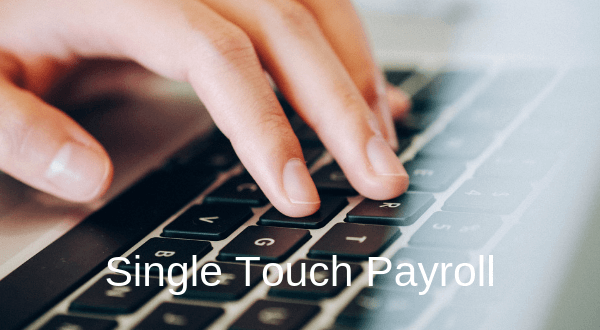
SINGLE TOUCH PAYROLL (STP)
Single Touch Payroll (STP) was introduced on 1st July 2018 for all businesses with 20 or more staff.
STP is set to be rolled out in stages to smaller organisations with less than 20 employees as at 1 July 2019.
You need to be aware of what STP is and what it will mean for you into the future.
What is Single Touch Payroll?
It is a new way of reporting tax and super information to the Australian Taxation Office (ATO).
What do you need to know if you are an employee?
Some employers have already started STP reporting. However, the majority of employers with 20 or more employees were required to start from 1 July 2018.
If your employer reports through STP they will send to the Australian Taxation Office (ATO) your tax and super information each time they pay you.
You will still be paid the same way.
What do you need to know if you operate a business?
The information is sent to the ATO either directly from your software or through a third party.
STP will require you to have your payroll transaction data transferred to the ATO each time your employees are paid. This may require you to use a software solution that will transmit the data to and from the ATO on your behalf.
This payroll or reporting system must be STP compliant, so that each pay cycle you can report the following items to the ATO:
- each employee’s name and tax file number (TFN)
- gross amount paid
- tax withheld on the gross
- ordinary time earnings for the period, and
- any superannuation guarantee obligations.
As part of this new system, the reports and amounts owing will be available to you in real time. This means that, if you wish, you will be allowed to make payments towards PAYG tax withheld and superannuation contributions in your pay cycle before the due date.
If your system is already automated with reports that can provide the information listed above for every pay cycle, all you need to do is confirm if your product is STP compliant.
What if you do not have software?
There will also be a number of options available for employers who do not use payroll software, such as no-cost and low-cost Single Touch Payroll solutions.
A lot of these products are still being developed.
We can also provide a payroll processing services if you are not confident to do it yourself or we can help you transition to a solution that is easy for you to use.
What if you ‘stuff it up’?
Don’t panic. The ATO has said that there will be no penalties for mistakes, missed or late reports for the first year.
What if you do not have an internet connection or it is unreliable?
The ATO has said that they will provide exemptions from STP reporting for employers in areas with intermittent or no internet connection.
Do you have 4 or less employees?
If you’re an employer with four or less employees you are considered a micro employer.
The ATO is allowing those who rely on a registered tax agent to report quarterly for the first two years, rather than each time payroll is run.
This option will be available until 30 June 2021.
What if you have a family owned business?
The ATO then counts you as a closely held entity. That means the employees are directly related to the business that they get paid from. For example, you are the employee of a company where you are also the director or shareholder.
We know that you don’t usually take a ‘set regular wage’ and draw a wage as the cashflow allows.
Employers with 19 or less employees do not need to report closely held payees in 2019-2020 financial year. There is a one year exemption.
However, all other employees (arms-length employees) must be reported through STP from 1 July 2019, or a deferred start date if one has been granted.
You don’t need to apply for the exemption for reporting closely held employees.
You will be able to lodge payment summaries for closely held employees up to the due date of your 2019 income tax return.
Employers with 19 or less employees can report closely held payees quarterly from 1 July 2020 – after the exemption period.
This report will be due at the same time as your activity statement.
What steps should you take?
This quarter we will be reviewing the employees for each Business Activity Statement that we complete. We will contact you with what individual steps your business needs to make.
Need help?
In the event that you need a solution or just want your system reviewed, we are happy to help by advising a suitable cost effective solution.
We are here to help you through the process if you need it. Please do not hesitate to contact us for support.
Davis Accounting Services Pty Ltd ABN: 44 131 659 857 Liability limited by a scheme approved under Professional Standards Legislation
**Disclaimer: Be advised this information is of a general nature only. Specific advice needs to be obtained for your individual situation. Neither the firm nor any of its employees accepts any liability for any loss or damage to any person as a result of reliance on the rates and information set out on this newsletter.


